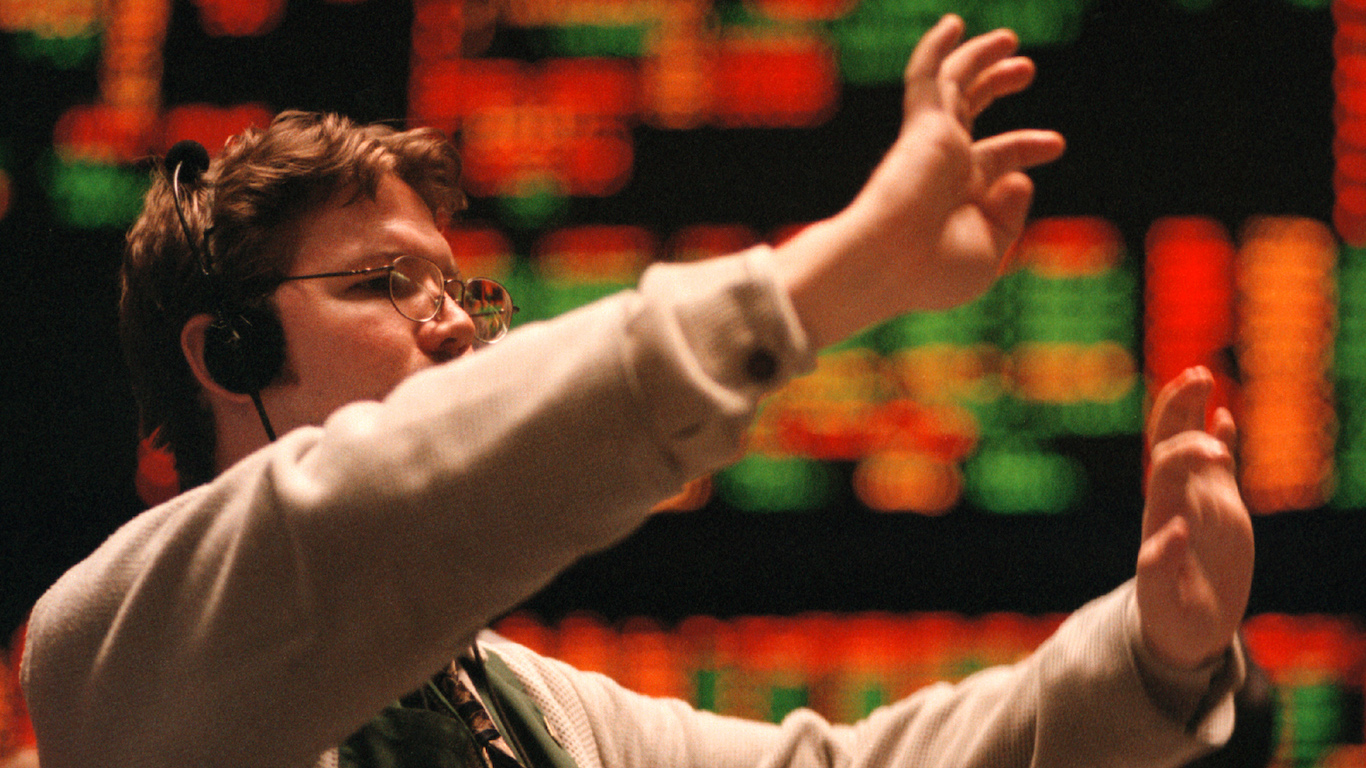
Darden Restaurants‘ (NYSE: DRI) recent earnings report revealed mixed results, with Olive Garden struggling to grow same-store sales. The restaurant industry is facing challenges due to consumer fatigue over price increases, leading to deep discounting across the sector. We analyze whether Olive Garden could find itself “stuck in the middle” between budget options that are increasingly offering combo discounts to lure shoppers away from fast food and more high-end concepts.
With Red Lobster recently having declared bankruptcy, even the most iconic restaurant chains no longer feel safe.
Could Olive Garden Be at Risk of Following Red Lobster into Bankruptcy?
Here are some highlights from the conversation between 24/7 Wall Street Analysts Eric Bleeker and Austin Smith.
- Darden Restaurants reported earnings last week and they were mixed with revenue a little light but earnings a bit ahead of Wall Street expectations.
- Darden’s earnings are important because they own a number of national chains including:
- Olive Garden
- Longhorn
- Yard House
- Ruth’s Chris
- Capital Grill
- Seasons 52
- Bahama Breeze
- And other restaurants are part of their portfolio as well. With Red Lobster recently declaring bankruptcy and closing about 100 restaurants nationally, many are wondering what the next shoe to fall in the space is.
- The big headline surrounding Darden’s earnings was flat same-store sales growth overall, that number was brought down due to struggles at Olive Garden.
- Olive Garden reported same-store sales that fell 1.5% from last year.
- When we look at the overall picture, one thing is clear, restaurants being able to pass on price increases is dead for now.
- Darden’s fine dining options like Ruth’s Chris, Capital Grill, and Eddie V’s saw a 2.6% decrease in same-store sales.
- Compare that to Longhorn Steakhouse which saw a 4% increase. As you can see, more budget-friendly restaurants are performing better in the current environment.
- Now, Darden would emphasize that while Olive Garden is struggling, the entire restaurant industry is seeing struggles and Olive Garden is outperforming relative to peers.
- And the company is expecting to be able to raise prices at Olive Garden about 3% this year.
- Yet, the bottom line is there’s a lot of deep discounting in the restaurant industry right now as consumers have been burned out by price increases.
- Olive Garden says it’s avoiding discounts that could prove unprofitable and still managing to keep store traffic at improving levels, but it’s going to have a lot of competition in the next year if it’s discounts lag behind peers.
- For example, competitors like Chili’s and Applebee’s are moving toward combo meals for prices like $10.99 in hopes of luring customers from fast food.
- It’s hard for Olive Garden to hit those price points and still be profitable, so it may be stuck in the middle.
- We’ll have to see what happens in the coming quarters – but this does seem like a challenging environment for the company.
- Darden’s a great operator, but a first step with restaurant concepts that are struggling is often closing underperforming locations, so it’s probably worth watching if any Olive Garden closures are announced in the next year to see if it is a chain that can weather this current storm or is following in Red Lobster’s path.
Transcript:
Eric, Darden Restaurants reported earnings this week, and they were mixed with revenue a little light, but earnings a bit ahead of Wall Street’s expectations.
And now, this is very important because Darden owns a number of national sit-down chains, including Olive Garden, Longhorn, Yardhouse, Ruth’s Chris, Capital Grill, Bahama Breeze, and Seasons 52.
And others are part of their portfolio. So with Red Lobster, the famed sit-down restaurant recently declaring bankruptcy, largely a bunch of self-inflicted wounds here.
But the company had to close about 100 restaurants nationally. And many of us were wondering, what is going to be the next shoe to drop? So what did you see in Darden’s restaurant’s earnings?
Is Olive Garden the next Red Lobster? I mean, what’s going on? Everybody wants to know who’s going to go belly up next following the bankruptcy announcement from Red Lobster. What did you see in those earnings?
Yeah, the important headline if you’re watching the restaurant space and wondering which stores could struggle is it’s really going to be about pricing dynamics in the next year.
So let’s look at the headlines from Darden and what it says about Red Lobster and some of their other chains. The big headline is that same-store sales were flat, and that’s a bad number if you’re a restaurant company or a retailer of any kind.
The results were also brought down because Olive Garden lagged some of their other stores. With Olive Garden, same-store sales fell about 1.5%.
When we look at the overall picture, it is somewhat of a struggle the higher your pricing is. As one example, their fine dining concepts, which a lot of people are going to be familiar with.
We’re talking Ruth’s Chris, Capital Grill, any of these. It might surprise you to learn these are all owned by the same company. They saw a 2.6% decrease in same-store sales.
But Longhorn Steakhouse, which, let’s face it, is more budget-friendly, saw growth of 4%.
Now, Darden would emphasize that while all of Darden is struggling, the entire restaurant industry is seeing struggles, and it’s actually outperforming its peers.
And if you’re a consumer out there watching this, the big thing is I would expect from some of these struggles that these sit-down restaurants, they’re going to have to cap their prices.
Olive Garden’s projecting to about 3% growth in its pricing of menu items across the next year. The bottom line is we’re going to see a lot of deep discounting in the restaurant industry right now.
As customers, they’re just burnt out by price increases. Olive Garden says it’s going to avoid the worst of this deep discounting and that it’s seeing some success. Seeing traffic continue to stay flat will avoid the worst of these discounts.
But you’re going to see a lot of this. You look at brands like Chili’s or Applebee’s, fast food has gone expensive to a point that’s now competitive for them to try and lure customers. So they’re going for things like combos for $10.99 to try and get some of that demand sucked away from fast food.
The problem for Olive Garden is it’s hard for them to hit those kinds of prices and still be profitable. So Austin, part of my question going through these earnings is whether or not concepts like Olive Garden, and to extent Red Lobster had this as well, are going to be stuck in the middle.
They can’t offer that true value pricing, but they’re also not quite a high-end restaurant that could be potentially buffered from some of this consumer shifting away from these price increases in the middle. We’ll have to see what comes in the quarters to come, but it does seem pretty challenging for the company.
Darden, the overall operator of Olive Garden and these other concepts we talked about earlier, they’re a great operator. But often with these changes, the first signs of trouble are closing underperforming locations.
I haven’t seen announcements from that in Olive Garden, they didn’t talk about it in their call, but if we see that, it would be a sign that this could be a chain potentially following down the Red Lobster path.
Yeah, and Eric, you touched on this. And one of the things that investors really have to do in this space, they have to hold two different ideas in their head here.
So recently, a lot of data is suggesting that Americans are now spending more than 53% of their household food expenditure on dining out as opposed to eating in. So the first instinct there is, oh, restaurant chains are going to be doing great.
Darden might just have a dated portfolio, which is out of touch with where American appetites are going, which is fast, casual, and affordability. So you touched on this when you said that Longhorn Steakhouse saw a 4% increase because it’s one of the more budget-friendly restaurants.
So although Americans are eating out more and more than half of their budget is going to eating out, the sit-down concept might be a little dated. Americans are preferring fast casual. And frankly, with inflation and everything we’ve seen economically, affordability matters.
And that’s been the story behind the growth of Chipotle, which is really well-positioned to capture both of those dynamics. So definitely a lot to watch with Darden.
Americans are eating out more, but the company really needs to make sure that their portfolio is positioned well and budget-friendly to appeal to those current appetites of consumers. And those $10.99 combo meals look like the best path forward to achieve that sort of resonance with American eaters today.
Are You Still Paying With a Debit Card?
The average American spends $17,274 on debit cards a year, and it’s a HUGE mistake. First, debit cards don’t have the same fraud protections as credit cards. Once your money is gone, it’s gone. But more importantly you can actually get something back from this spending every time you swipe.
Issuers are handing out wild bonuses right now. With some you can earn up to 5% back on every purchase. That’s like getting a 5% discount on everything you buy!
Our top pick is kind of hard to imagine. Not only does it pay up to 5% back, it also includes a $200 cash back reward in the first six months, a 0% intro APR, and…. $0 annual fee. It’s quite literally free money for any one that uses a card regularly. Click here to learn more!
Flywheel Publishing has partnered with CardRatings to provide coverage of credit card products. Flywheel Publishing and CardRatings may receive a commission from card issuers.
Thank you for reading! Have some feedback for us?
Contact the 24/7 Wall St. editorial team.





